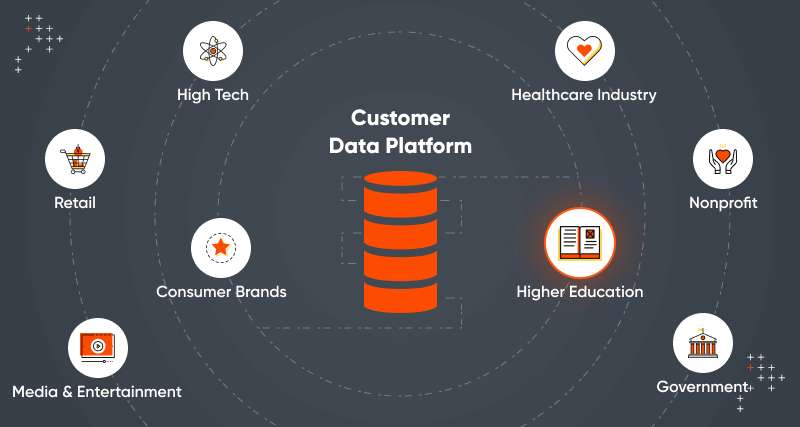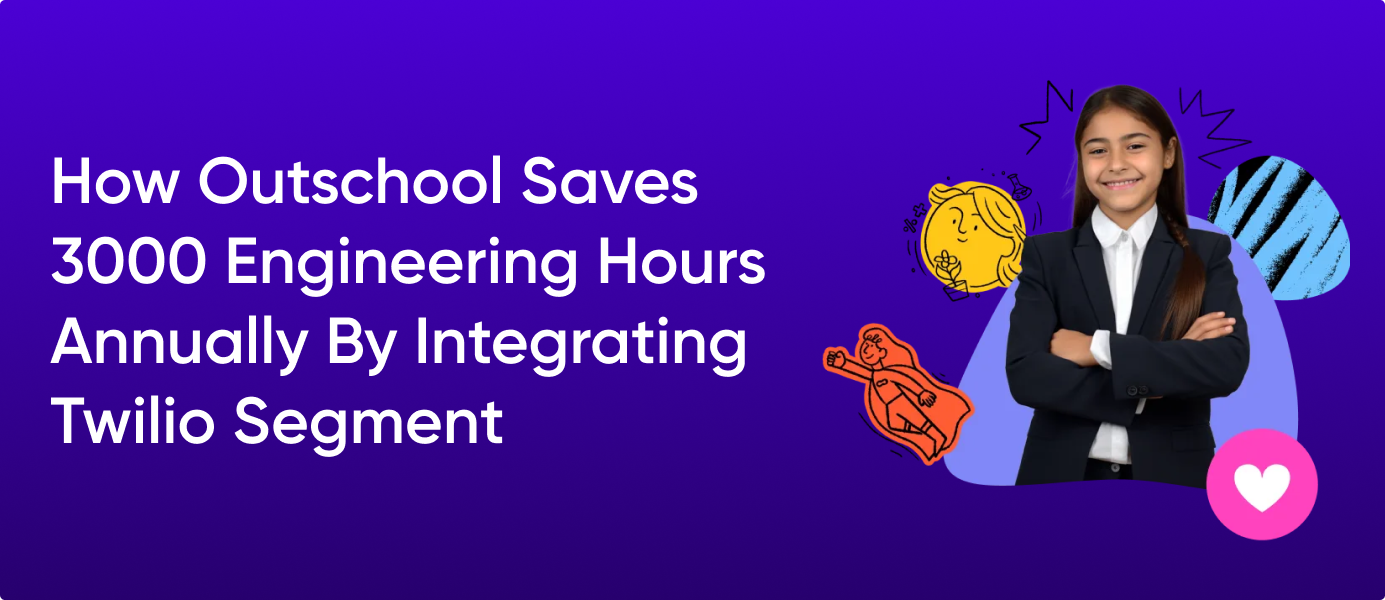Introduction
Universities often struggle to understand and connect with their diverse stakeholders. Due to fragmented data systems, higher education institutions have trouble achieving a unified view of students, alumni, and donors. This results in inconsistent outreach efforts and missed opportunities for engagement.
An effective solution to these problems can be achieved by implementing a Customer Data Platform (CDP).
CDPs can unify and organize data from enrollment systems, CRM databases, and online interactions to provide a holistic view of stakeholders. This enables universities to deliver personalized digital experiences and drive positive outcomes.
What Is A CDP?
A Customer Data Platform (CDP) is a technology solution that allows organizations to gather, consolidate, and oversee customer data from multiple sources, including website visits, email interactions, and social media. Organizations then combine and structure this data to understand each customer holistically.
Sam Leclerc, Account Executive at Acquia, shared more unique insights about CDPs during an episode of DXP Deconstructed.
How Outschool Saves 3,000 Engineering Hours Annually With Segment CDP
Outschool, a leading online education platform, offers more than 100,000 live classes. It has over 900,000 learners globally. The classes include tap dancing, fractions, coding, and much more.
Outschool needed to better utilize its customer data to respond to the rapidly changing needs of its users and the business. Due to the COVID-19 pandemic, Outschool also saw an enormous demand for online learning resources. The team wanted to expand its business by better understanding customer needs and delivering more relevant and personalized experiences.
By integrating Twilio Segment, Outschool created a centralized view of the customer to better understand and personalize experiences. Outschool also used customer data to deliver hyper-relevant digital experiences, marketing campaigns, and class recommendations to match the learner’s preferences and needs.
Segment CDP helped Outschool save 3000 engineering hours annually that would have been spent on building and maintaining an in-house CDP. Outschool can now deliver more optimized user experiences and recommend relevant classes.
How Can Customer Data Platforms Help Transform Universities
A CDP can help universities improve student experiences, engagement, and institutional success.
Use Case 1: Personalizing Student Enrollment
Higher education institutions can use a CDP to collect and analyze data from various touchpoints. This data can then be used to create personalized communication strategies employed during student enrollment.
How It’s Done
The first step is to set up the CDP and integrate data from various sources like the website, social media platforms, email campaigns, and admissions systems. The CDP will analyze this data to create comprehensive profiles of prospective students. These profiles will include their interests, preferences, academic background, and engagement with the university's marketing materials.
After that, the CDP uses machine learning to segment prospective students based on factors such as academic interests, geographic location, and likelihood of enrollment. This provides the university with the required data to tailor its recruitment messages and outreach efforts.
This helps deliver personalized content and communications through email, social media ads, and other channels. By engaging prospective students with relevant and timely information, the university increases the likelihood of students applying and enrolling.
Use Case 2: Enhancing Student Success And Retention
A CDP can help universities identify students who may be at risk of dropping out or falling behind academically. By analyzing student engagement, performance, and behavior data, institutions can intervene proactively with targeted support services like academic counseling. This will help improve student retention and success rates.
How It’s Done
The first step is to set up the CDP and feed data from the Learning Management System (LMS), Student Information System (SIS), academic advising records, and student engagement platforms. The CDP will analyze this data to identify patterns and indicators of student success or risk. These patterns can include attendance, course grades, participation in extracurricular activities, and interactions with academic advisors.
After that, the CDP will use predictive analytics to generate risk scores for each student, flagging those who are at high risk of dropping out or experiencing academic difficulties. Using this score, the institution can intervene with targeted support services, such as tutoring, academic advising, mental health counseling, and financial aid assistance.
By addressing the specific needs of at-risk students in a timely manner, universities can improve student retention rates, enhance the overall student experience, and help more students succeed academically.
Use Case 3: Improving Alumni Engagement And Fundraising
Universities can use a CDP to maintain ongoing relationships with alumni by tracking their interactions with the institution across various channels. This data can be used to personalize business communications, tailor fundraising appeals, and cultivate a sense of community.
How It’s Done
The university needs to consolidate data from its alumni database, fundraising software, event management system, and social media channels into the CDP. After that, the CDP will create comprehensive profiles of alumni by capturing information such as graduation year, degree program, career trajectory, donation history, and engagement with university events.
Using the segmentation and targeting capabilities of a CDP, the university can segment alumni based on factors such as wealth, affinity, and past giving behavior. This will help identify alumni who are most likely to donate. The university can tailor its outreach efforts to this segment, delivering personalized appeals, event invitations, and updates on university news and accomplishments.
So, by fostering meaningful connections with alumni and providing them with opportunities to contribute to their alma mater, the university increases alumni engagement and fundraising revenue. This will allow the institution to support its mission and strategic priorities.
Use Case 4: Ensuring Cross-Departmental Collaboration And Data Integration
A CDP can serve as a centralized platform for storing and sharing data across different university departments, such as admissions, marketing, student services, and alumni relations. This facilitates collaboration and data-driven decision-making, enabling the institution to better understand and serve its constituents.
How It’s Done
First, the university needs to set up a CDP as a centralized platform for storing, integrating, and analyzing data from admissions, marketing, alumni relations, and other departments. The CDP will enable seamless data sharing and collaboration across departments. This will help break down departmental silos and facilitate a holistic view of student and institutional data.
The institution can use the insights generated by the CDP to conduct strategic planning, resource allocation, and program development initiatives.
How edX Is Modernizing Its Tech Stack With Twilio Segment
Founded by MIT and Harvard, edX is a trusted platform for education and learning with over 20 million active users. The platform faced significant challenges in integrating and maintaining analytics tools for various teams. Each tool required repetitive and cumbersome coding, consuming valuable engineering time.
To address these issues, edX implemented Twilio Segment CDP, a unified platform that streamlined the integration of third-party analytics and marketing tools, saving time and empowering business analysts. Twilio Segment provided consistent data across tools, simplifying analysis and enhancing security for student data.
With Twilio Segment, edX can easily manage integrations and maintain efficient data flow, transforming its data infrastructure for better product and business visibility.
Our experts at Axelerant can help implement similar solutions and more for your university. Schedule a call to know more.

Abhishek Dhariwal, Senior DXP Consultant
Abhishek is a true explorer—whether it’s different cuisines, places, or subjects, he enjoys it all. He reads at least two newspapers daily, values attention to detail, and prioritizes thoughtful solutions over quick fixes. Away from work, you can find this technophile enjoying TV Series.
%20copy.png)
Sayan Mallick, Marketing Assistant
A former professional e-sports player, passionate about anime and technology—that’s Sayan. He is an eccentric explorer who likes to read, play games, teach, and spend time with his pet dog, Buddy.

Simran Sethi, Marketing Associate
Simran is an avid reader. She is an active runner, who also likes to swim, dance, and sing. For her, the meaning of life lies in the little things. Kindness, passion, and compassion are her life’s essential values.

 We respect your privacy. Your information is safe.
We respect your privacy. Your information is safe.


-4.png)

Leave us a comment